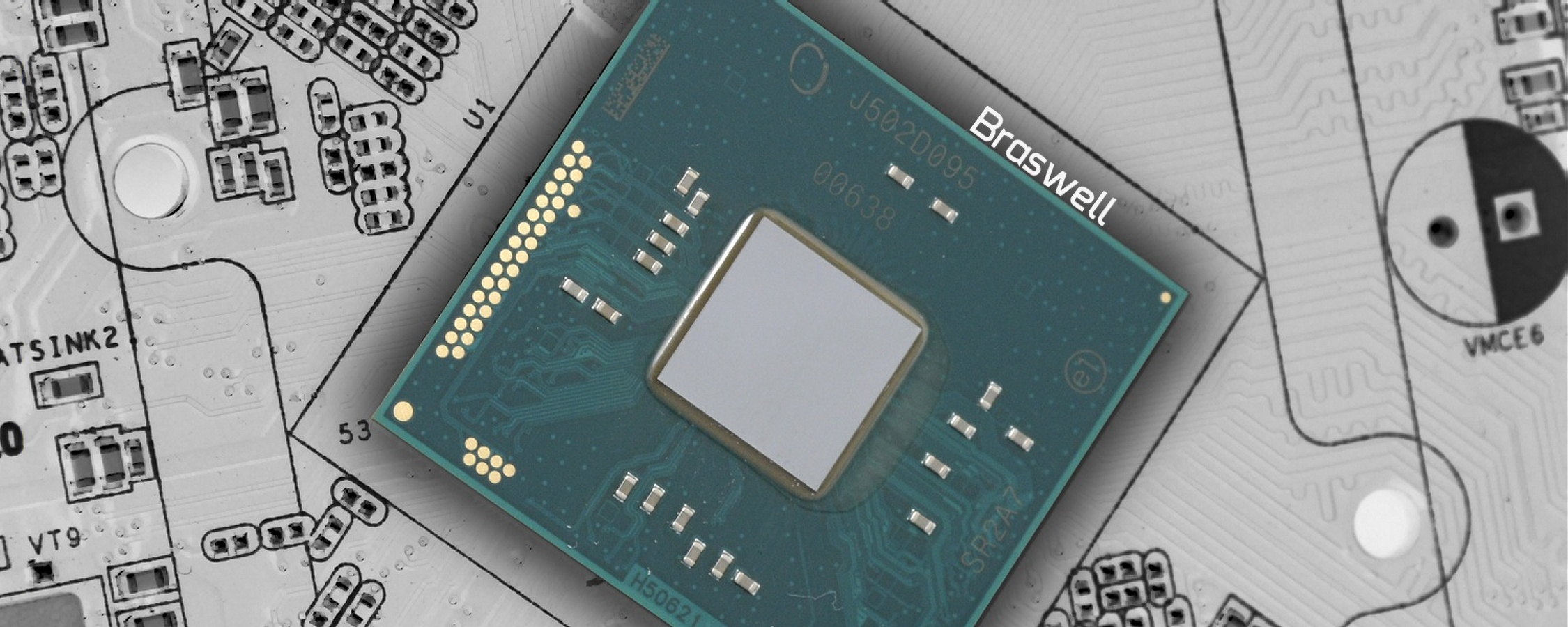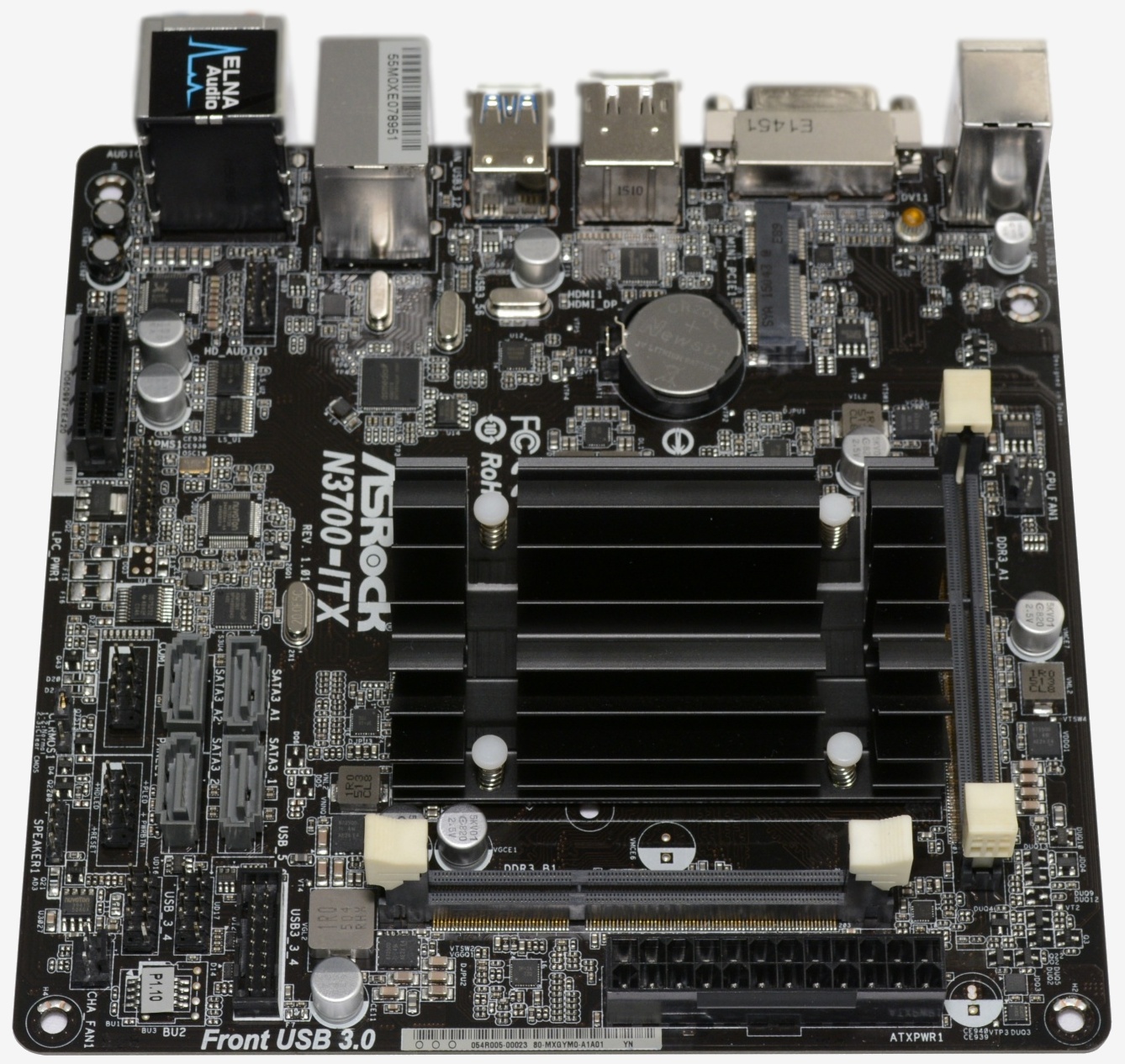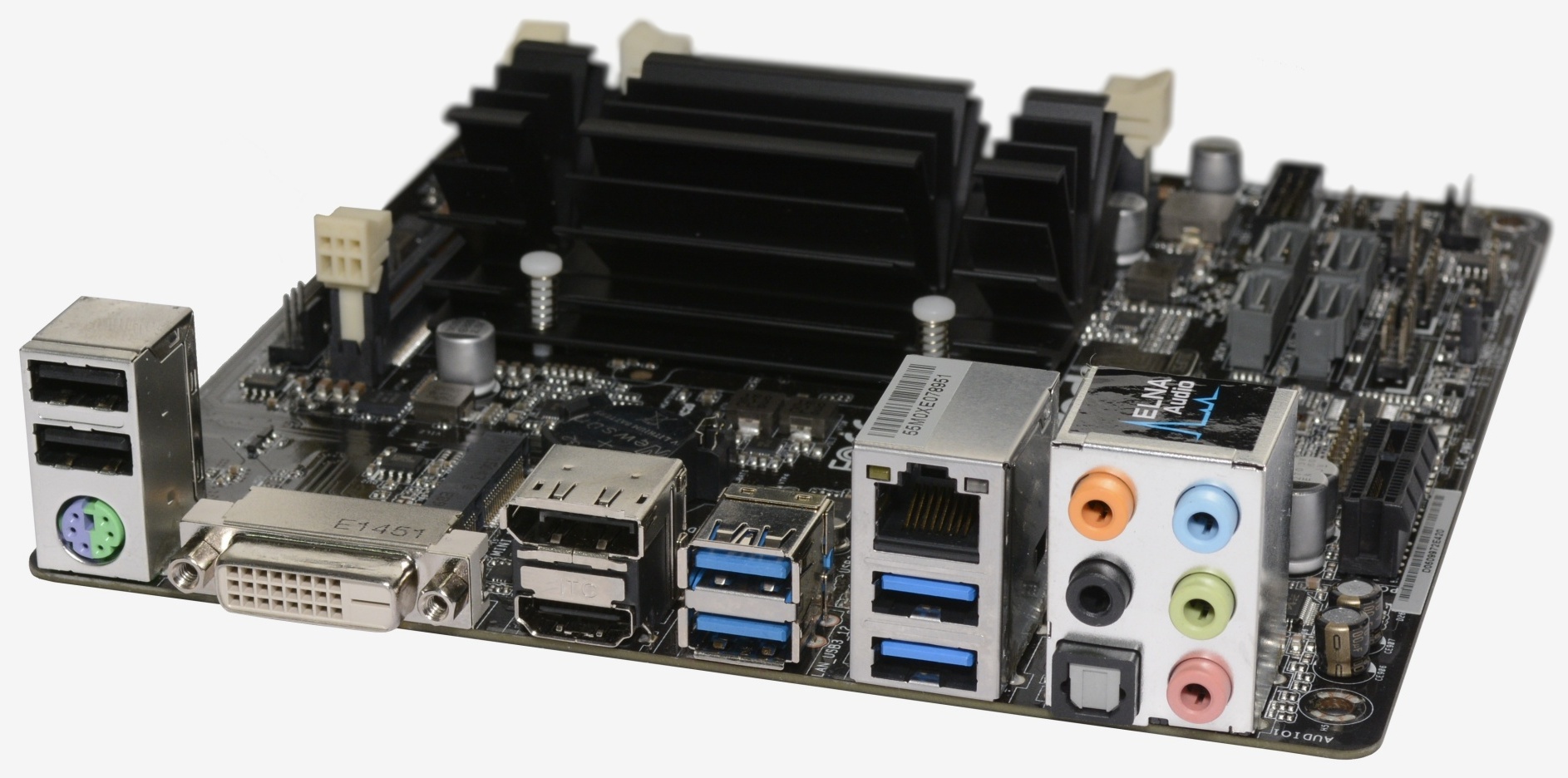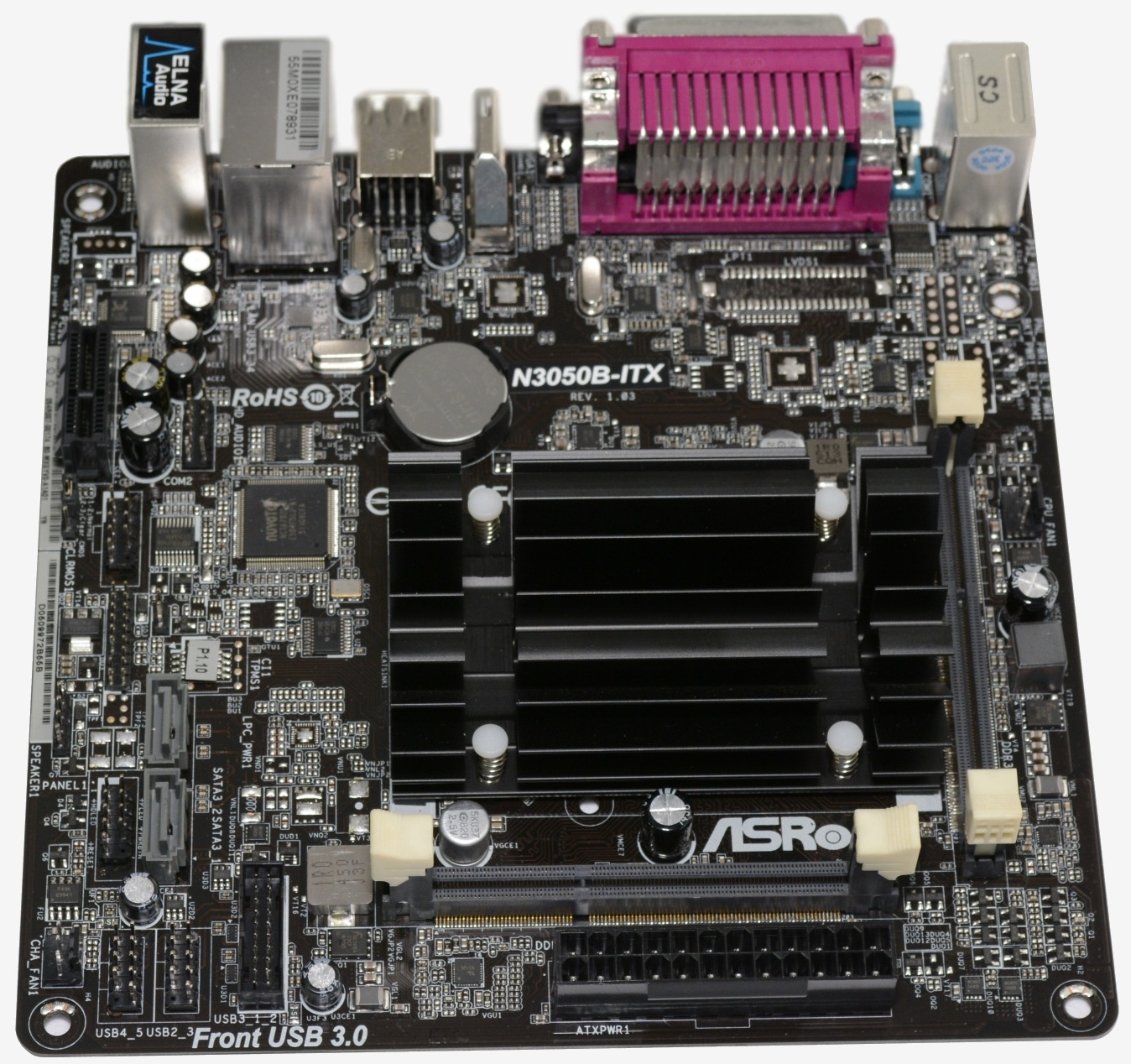When Intel announced an accelerated roadmap for its Atom SoC range in May 2011, the company's 22nm Silvermont microarchitecture was scheduled for a 2013 release and would later receive a 14nm die shrink in 2014, codenamed Airmont. However, setbacks in developing the 14nm process delayed the arrival of Broadwell parts, especially the high performance variants.
Although it launched in 2013, we didn't get our hands on the desktop Bay Trail-D variants until August of 2014, once Asrock started peddling its Bay Trail Motherboards. At the time we checked out the Asrock D1800M (Celeron J1800), Q1900M (Celeron J1900) and Q2900 (Pentium J2900).
To recap, the Celeron J1800 was a dual-core part clocked at 2.58GHz with a tiny 1MB L2 cache, while the J1900 had four cores working at 2.41GHz and double the cache. The included GPU was a heavily diluted HD Graphics engine with just four execution units, which helped Intel keep the Bay Trail-D power requirements at a minimum.
The Pentium J2900, like the J1900, also featured four cores clocked at 2.41GHz with a 2MB L2 cache and the same rubbish four EU GPU. The only difference being that the J2900 could self-overclock on the fly with a maximum burst speed of 2.67GHz, allowing for 6% more performance on average.
We found that the Celeron J1900 was a better value than the J2900 as it offered a similar level of performance at a much lower price. Overall, in anything non-3D related, the J1900 was the way to go for extreme budget builders while AMD's AM1 platform was better equipped for 3D rendering.
Now we have Intel's new Braswell SoCs, which promise to be faster across the board while also consuming less power. A few months ago Intel quietly launched its first desktop Braswell SoC solutions, offering dual-core and quad-core Celeron models along a single quad-core Pentium.
Destined for entry-level laptops and desktops, the new chips are manufactured using Intel's 14nm process and include the mobile Celeron N3000, N3050, N3150, and Pentium N3700. The last three will be made in versions for desktop systems and today we have the N3050 and N3700 in hand.
| Model | Cores / Threads |
Frequency / Turbo |
L2 cache |
GPU base/boost | Memory | TDP | Price |
| Celeron N3000 | 2 / 2 | 1.04 / 2.08 GHz | 1 MB | 320MHz / 600MHz | DDR3-1600 | 4W | $107 |
| Celeron N3050 | 2 / 2 | 1.60 / 2.16 GHz | 1 MB | 320MHz / 600MHz | DDR3-1600 | 6W | $107 |
| Celeron J1800 | 2 / 2 | 2.41 / 2.58 GHz | 1 MB | 688MHz / 792MHz | DDR3-1333 | 10W | $72 |
| Celeron N3150 | 4 / 4 | 1.60 / 2.08 GHz | 2 MB | 320MHz / 640MHz | DDR3-1600 | 6W | $107 |
| Pentium N3700 | 4 / 4 | 1.60 / 2.40 GHz | 2 MB | 400MHz / 700MHz | DDR3-1600 | 6W | $161 |
| Pentium J2900 | 4 / 4 | 2.41 / 2.67 GHz | 2 MB | 688MHz / 792MHz | DDR3-1333 | 10W | $94 |
As you can see above, Braswell's base operating frequencies are much lower than Bay Trail-D parts. The desktop Braswell models start at just 1.6GHz whereas the J1800 and J2900 were clocked 50% higher, not to mention that the new Pentium N3700's turbo frequency only matches the base clock of the Pentium J2900.
While the core counts and cache remain the same for comparable models, the DDR3 memory support has been upgraded to 1600MHz from 1333MHz. The TDP rating has also been reduced from 10 watts to just six.
In addition to the new Airmont CPU cores, the HD Graphics engine has been updated to the Generation 8 LP architecture, sporting up to 16 execution units clocked as high as 700MHz. It will be interesting to see how Intel's updated IGP compares to the R3 (Radeon HD 8400) inside AMD's Athlon 5350 APU.
Asrock's Mini-ITX Braswell Boards
Asrock already has over half a dozen Intel Braswell motherboards on offer, including a range of MicroATX and Mini-ITX boards.
The Mini-ITX models are the preferred choice for low power computing and therefore we are going to take a look at the N3700-ITX and N3050B-ITX, the most expensive and most affordable versions.
In the middle there is also the N3150-ITX, which is likely the best value option but we don't have this model to test.
Asrock N3700-ITX
For a budget motherboard the Asrock N3700-ITX is better equipped than expected. Asrock has included four SATA 6Gb/s ports, six USB 3.0 ports, 7.1 channel audio, Gigabit Ethernet, and a DisplayPort output alongside HDMI and DVI.
Unfortunately, there isn't a full length PCIe x16 slot. For that you'll need to look at the MicroATX N3700M, which also supports standard desktop memory instead of SO-DIMM like the N3700-ITX.
However, the N3700M doesn't have a mini-PCIe slot whereas the N3700-ITX does, making it quick and easy to include a WiFi/Bluetooth module.
Like the Asrock Q2900-ITX before it, the N3700-ITX includes a passively-cooled low-profile heatsink over the processor.
Compared to the Q2900-ITX, the N3700-ITX not only features the updated Pentium N3700 processor but it also offers two extra USB 3.0 ports, two more SATA ports and offers a DisplayPort output. So all round the N3700-ITX is a nice upgrade.
Asrock N3050B-ITX
The N3050B-ITX really is a simple motherboard that has been designed for extremely limited budgets. That said, the feature list is similar to the previous generation's flagship board, offering four USB 3.0 ports and two SATA 6Gb/s ports.
The display connectivity list is missing DisplayPort but picks up the more low-end friendly VGA (D-Sub) output, while HDMI is still included.
The supported 7.1 channel audio has been downgraded from the Realtek ALC892 codec used by the N3700-ITX to the more budget conscious ALC887. Legacy support is prevalent here with the N3050B-ITX boasting a Parallel Port, COM port and two PS/2 ports on the I/O panel.
Onboard we find the same passive heatsink, this time taking care of the dual-core Celeron N3050.
There are two SO-DIMM slots which support up to 16GB of DDR3/DDR3L 1600 memory.
Sadly, while the single PCIe 2.0 x1 slot remains, the mini-PCIe slot is missing, meaning WiFi support will need to be added through other means.








